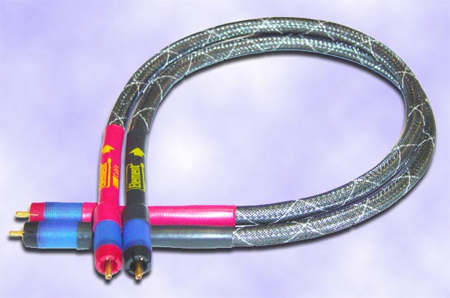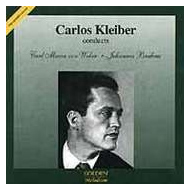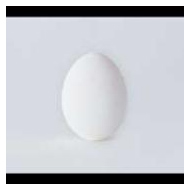You are reading the older HTML site
Positive Feedback ISSUE
15
september/october 2004
element cables
Twisted Pair II interconnects and speaker cables
as reviewed by Tom Campbell

|
TOM CAMPBELL'S SYSTEM
LOUDSPEAKERS
ELECTRONICS
SOURCES
CABLES
ACCESSORIES
|
The cost of high-end cables has spiraled in recent years, and while some of them are very complex and expensive to manufacture, the trend seems mostly to be an exercise in determining how much the market will bear. Like the popcorn and soda that end up costing you more than the movie, manufacturers and dealers have found a very profitable sideline in wire. Not long ago, I believed that the price of true high-performance cables started somewhere north of $500. That had in fact been my experience since the late 90s, when, as a budding audiophile, I started with $20 Monster cables and worked my way up to the very fine but very expensive silver-and-gold offerings from Siltech.
However, in the last couple of years, I have come to believe that the cable paradigm has shifted. First, there have been substantial advances in the state of the art that have worked their way into inexpensive cables, and second is the introduction of a web-based business model. Don't get me wrong—your brick 'n' mortar dealer is fully worthy of your support, particularly when it comes to things like amplifiers and speakers. Few internet sellers can serve you as well as a good local dealer for major components, and it's good to know that the person you bought your turntable from is across town rather than across the country.
Cables are a different matter. They are seldom damaged in shipping, and unlike, say, tube amplifiers, they seldom have short- or long-term performance quirks. They require no assembly, and offer little challenge in the way of proper setup. Most internet cable sellers also offer a 30-day trial period with a money-back guarantee, making cables a low-risk proposition for online purchase. The online sellers I've dealt with have a hobbyist's true zeal, and a sincere interest in offering their wares at as low a cost as possible.
By accident or design, I've become Positive Feedback's specialist in low-cost cables. In the past year, I've written positively about the offerings from Signal Cable, a small startup with a DIY aesthetic, and River Cable, an established pro-market provider that has moved into the consumer market. Though these two companies are very different in size and scale, both utilize a internet-based, direct-sale business model, with no distributor or dealer markups, and so are able to offer cables in the $100-$200 range that would cost many times more through retail channels. Most importantly, they come up with the goods. These cables have bested all the ones I've heard, up to a retail price of around $1000.
I described the Signal speaker cables and interconnects as the cleanest and most resolving I'd heard, while the River speaker cables have a slight but seductive added warmth that sacrifices a little top-end extension in favor of a marginally plump sonic character. The Rivers are also exceptionally smooth within their more limited range. This is not as backhanded a compliment as it may sound. Many cables (and many components—and many recordings, for that matter) have noticeable peaks or valleys in their frequency response, which manifest themselves as sharp sound (for peaks) or recessed sound (for dips). These errors are often intentional, as some audiophiles like sharp, etched, "punchy" sound, while others prefer a lush, creamy tonality. I find the River speaker cables highly "musical," not because they're slightly rolled off at the top (which they are—a bit), but because they are so even across the rest of their range. They impart a living, breathing quality to music. The Signal cables are more neutral, and I feel that they are better suited to high-end systems than the Rivers, which may be designed more for mid-level equipment. I've been listening to and admiring both cables over the past few months.
Element Cables was founded to make reasonably priced cables that can compete with the best available. Element products employ the thinking of cable guru Jon Risch as a starting point (as do the Signal cables). Risch, who is also the moderator of the cable forum at audioasylum.com, is a DIY hero who has posted his extensive research and design work on the web, available to all. (If you are interested in exploring his work, just Google his name and do some surfing.) Many of the large cable manufacturers, with multi-million dollar research, development, marketing, and operations costs, probably resent the hell out of upstart companies like Element. The big companies can legitimately raise doubts about the stability of the smaller companies, and you should exercise due diligence before buying from any online entity. Element has been around for less than a year, but it is establishing strong credentials with respect to both products and service. Ultimately, the proof is in the pudding, is it not? If the upstarts can make great products at a great price, with a money-back guarantee, are they not worth a shot?
The Twisted Pair speaker cables ($129 for a 6-foot pair, $12 for each additional foot) and Twisted Pair II interconnects ($99 for two-foot pair, $15 for each additional foot) are the top of Element's line, and employ a Risch-designed geometry that refines the recipe that Element used in its lower-cost Musical 2 interconnects (and which Signal uses for their Analog 2 Ics—are you keeping a scorecard?). I put the speaker cables in the system first, and let them break in for a week or two. They sound surprisingly good out of the box, but need some time to open up. Since they share the same design pedigree, you might expect the Element and Signal cables to be similar in sound, and you'd be right. Both are exceptionally clear and uncolored. They do not impose themselves on the music, and they are extremely good at capturing the acoustic of the recording space. With respect to all of the usual checklist items—tonality, dynamics, resolution, separation, width of stage, depth of stage—both the Signals and the Elements score high.
But (there is always a but) I prefer the Elements to the Signal cables. As a reader of audio magazines, I know that it can be frustrating when reviewers proclaim the latest as the greatest, but I am duty-bound to report my findings, and I find the Twisted Pair cables to be the best of the strong bunch I've reviewed for PFO. They combine all the strengths of the Signal cables with the outstanding smoothness and midrange purity of the River cables. I might not have noticed it without making the comparison, but the Signals sound a little bit strident. We're talking small degrees here, but they make a difference. The Twisted Pair cables bring you the best of both worlds—a transparent, detailed sound that is easy on the ears. This is the way music should sound. In my opinion, those who equate sonic truth with sharp and searing have their priorities sadly misplaced. In my system, the Element cables are detailed and transparent without becoming ruthlessly revealing. Their tonal balance is exemplary, and dynamic shifts, small and large, are impressively natural.
After listening to the Element speaker cables for three or four weeks, I added the Twisted Pair II interconnects. I replaced both my CD and LP connections, so my system was all-Element. I've found that speaker cables usually make a bigger difference than interconnects, and that turned out to be the case here. The Element interconnects complemented the speaker cables beautifully, kicking things up a notch in terms of clarity and refinement. I think it's a good idea to match your wires when possible, and the Element speaker cables and interconnects made beautiful music together. I inserted the River and Signal speaker cables to hear how the Element interconnects would mate with them, and found that the Twisted Pair interconnects were excellent in any combination, and were particularly strong at stereo separation and soundstage depth. In every case, however, the speaker cables determined the overall character of the sound. For the remainder of the review period, I went back to the all-Element arrangement.
 When I read about the passing of the great
conductor Carlos Kleiber, I was moved to take out my copy of his highly intense
1981 reading of the Brahms Fourth Symphony with the Vienna Philharmonic.
This early digital recording has been maligned as thin and diffuse, not worthy
of the brilliant performance. The Element cables did the best job I've heard of
delineating the orchestral textures and balances, and of making this problematic
recording sound three-dimensional and cohesive. To suit his vision of the work,
Kleiber drew uncharacteristically lean and brassy playing from an orchestra
known for its lush string sound. With the Element cables in place, it struck me
that, for the first time, I could hear into the recording. Yes, the orchestra
had tailored its sound at the conductor's request, but it was still unmistakably
the Vienna Philharmonic, playing with the roundness and splendor of tone for
which they are so well known. This was what a high-end audio system is supposed
to do—it didn't make everything sound either warm and lush or fast, zippy, and
"exciting," but accurately portrayed the performance.
When I read about the passing of the great
conductor Carlos Kleiber, I was moved to take out my copy of his highly intense
1981 reading of the Brahms Fourth Symphony with the Vienna Philharmonic.
This early digital recording has been maligned as thin and diffuse, not worthy
of the brilliant performance. The Element cables did the best job I've heard of
delineating the orchestral textures and balances, and of making this problematic
recording sound three-dimensional and cohesive. To suit his vision of the work,
Kleiber drew uncharacteristically lean and brassy playing from an orchestra
known for its lush string sound. With the Element cables in place, it struck me
that, for the first time, I could hear into the recording. Yes, the orchestra
had tailored its sound at the conductor's request, but it was still unmistakably
the Vienna Philharmonic, playing with the roundness and splendor of tone for
which they are so well known. This was what a high-end audio system is supposed
to do—it didn't make everything sound either warm and lush or fast, zippy, and
"exciting," but accurately portrayed the performance.
And so it went. The Element cables, working with my Coda amplifier and Harbeth speakers, had an uncanny sense of "rightness." Listening to several of the new Rudy van Gelder remasters from Blue Note, I felt I was hearing the RVG sound captured to a tee. Van Gelder has always gone for a fast, close, lively sound. The original LPs had it, and the CDs have it to a fault. Perhaps because the great but elderly engineer's hearing is not what it once was (top end hearing is always the first to go), the CDs err a bit toward brightness. On the reissues of Blue Mitchell's The Thing to Do and Art Blakey's Buhaina's Delight (great hard-bop titles from Blue Note's and van Gelder's most glorious period), all of the RVG hallmarks were captured with stunning clarity and yes, a little top-end sizzle.
 I've read several interviews in which Wilco
frontman Jeff Tweedy speaks about the production on the band's new release, A
Ghost Is Born. The group was apparently trying to get back to the warm,
intimate sound of early-to-mid-70s rock records, before that live-in-the-studio
feel gave way to the highly synthetic productions of the 80s, which then evolved
into a style featuring correct instrumental timbres but airless, artificial
soundscapes. Even on good-sounding contemporary recordings, I frequently get the
sense that the musicians have never met each other, but A Ghost Is Born
sounds as advertised—like being in the studio with the band, with Tweedy
half-whispering the mostly quiet, mostly introspective songs directly into his
fans' ears. Once again, the Element cables helped my system convey a tangible
sense of "rightness."
I've read several interviews in which Wilco
frontman Jeff Tweedy speaks about the production on the band's new release, A
Ghost Is Born. The group was apparently trying to get back to the warm,
intimate sound of early-to-mid-70s rock records, before that live-in-the-studio
feel gave way to the highly synthetic productions of the 80s, which then evolved
into a style featuring correct instrumental timbres but airless, artificial
soundscapes. Even on good-sounding contemporary recordings, I frequently get the
sense that the musicians have never met each other, but A Ghost Is Born
sounds as advertised—like being in the studio with the band, with Tweedy
half-whispering the mostly quiet, mostly introspective songs directly into his
fans' ears. Once again, the Element cables helped my system convey a tangible
sense of "rightness."
About the only (possibly) bad thing I can say about the Twisted Pair speaker cables and interconnects is that they don't do anything to draw attention to themselves. They won't make you jump out of your seat by goosing the highs, or make thin recordings sound fat. They simply open a wide, crystal-clear window onto a recording, letting you know exactly what's there as long as your components are capable of supporting them. I would be interested to hear from PFO readers with megabuck cables who are willing to give the Elements a listen. I hope that cables costing thousands of dollars can do something that these can't, but I'd love to know just what that is.
When I hear what is being done at sane prices by companies like Signal, River, and now Element, I have to question why anybody would spend an extraordinary amount of money on wire. The Element cables are so inexpensive that a marketing consultant would probably advise the company to raise their prices in order to be taken seriously. Don't fall for that more-expensive-is-better jive. Sometimes, more expensive is just more expensive. Tom Campbell
Retail
Twisted Pair speaker cables: $129 per 6-foot pair; $12 each additional foot
Twisted Pair II interconnects: $99 per 2-foot pair; $15 each additional foot
Element Cables
web address: www.elementcable.com
email address:
[email protected]
